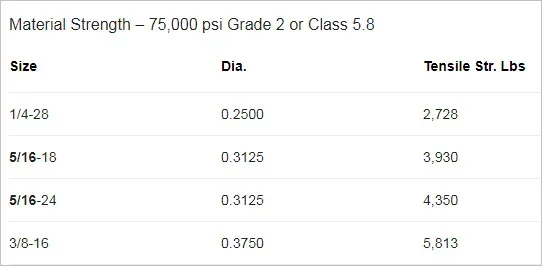Chicken lights
Forum Pony Express Driver
Ok so I have a dumb question.
So I have six of these on my truck. They cost $30 each to buy. I’ve replaced four but should replace the last two. If I want to make these, I’m sort of confused on what size steel to start with
The rod below the threads measures 0.275, yet the threads measure 0.308.
That can’t be right, I’m guessing these are a stamped part maybe?
It’s just 5/16” NC thread. Nothing special
But how can the outer diameter of the threads be larger than the material of the rest of the part?

